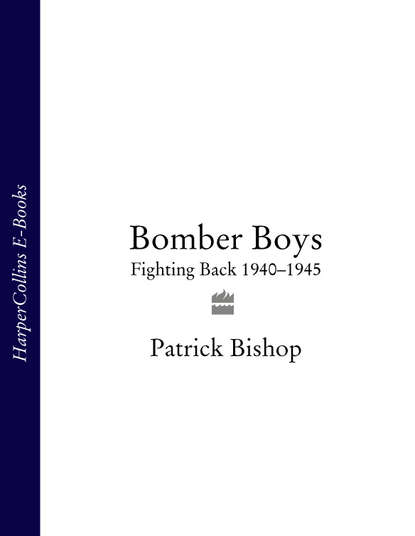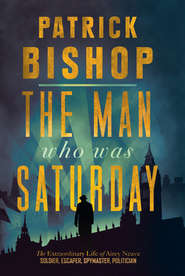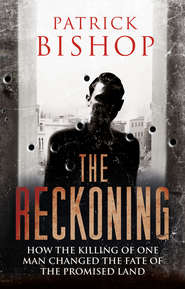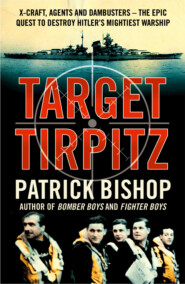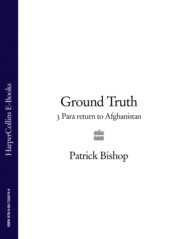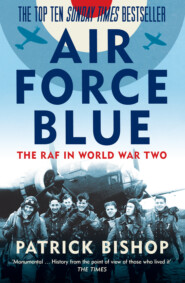По всем вопросам обращайтесь на: info@litportal.ru
(©) 2003-2024.
✖
Bomber Boys
Автор
Год написания книги
2019
Настройки чтения
Размер шрифта
Высота строк
Поля
4 Crewing Up (#ulink_af13c112-3b12-5316-bd04-7433e05494ac)
The process by which these disparate and largely unskilled young men were moulded into effective members of a bomber crew was one of the great achievements of the wartime RAF. It was thorough, on the whole efficient, and surprisingly imaginative, qualities which seemed quite out of keeping with the prevailing pre-war service ethos of myopia and conservatism. Noble Frankland, who had joined the University Air Squadron on going up to Oxford in 1941 and went on to join Bomber Command and co-write the official history of its war, reckoned that by the end of operational training ‘most crews [had] a reasonable basis upon which to test their fortunes and their courage.’
The instruction period certainly lasted long enough. Ken Newman, who volunteered in May 1941 and was selected for pilot training, did not fly his first operational mission until the spring of 1944. A gap of about two and a half years between joining up and going into battle became the norm.
The strategic air campaign was, essentially, made up as it went along. Circumstances changed rapidly in the early days and it was some time before a regularized training programme evolved. With the coming of the four-engined heavies, the Stirlings, Lancasters and Halifaxes, the system settled down to produce a continuous stream of competent and well-prepared airmen.
The long journey to an operational squadron began with a visit to the RAF local recruiting station. Applicants were given a medical, an academic test and a brief interview after which the most obviously unsuitable were weeded out. Volunteers were applying simply to join the RAF and had no idea in which branch of the service they would end up. In the early stages, many dreamed of becoming fighter pilots. But by the end of 1940 Fighter Command’s hour had passed. The air war now belonged to Bomber Command and it was there that most volunteers would be sent. Even while the Battle of Britain was at its height, Churchill told the Cabinet and the Chiefs of Staff that ‘the fighters are our salvation, but the bombers alone provide the means of victory.’
Official propaganda emphasized their vital role. The first successful film of the war, Target for Tonight, which came out in July 1941, was a drama-documentary which used no actors, only RAF personnel who played themselves. It followed the crew of a Wellington, F for Freddie, preparing and executing a typical raid on a typical target in Germany, piloted by Charles ‘Percy’ Pickard, a blond, impassive, pipe-smoking paradigm of the pre-war RAF. The flying scenes, although spliced with authentic footage, look amateurish and unreal now and the airmen act their parts with a touching diligence but an almost total absence of technique. It was nonetheless a wild commercial success and was seen by audiences all around the free world.
Recruiting posters portrayed the crews as gallant and spirited, the natural successors to the Fighter Boys. Noble Frankland needed little convincing that Bomber Command was the place to be. ‘I thought that the defence of Great Britain was over and the next step was to smash the Germans up. I was quite keen to take part in smashing up the Germans, which I think was a fairly common sort of instinct, but I actually had an opportunity to do it.’
As the war progressed, it became clear that bombing was drudge work, tedious and repetitive, and with the added disadvantage of being highly dangerous. Some volunteers who were chosen to fly were dismayed when they heard what it was that they would be flying. Dennis Field had done his initial instruction on single-engined Harvards and was looking forward to going on to fighters. As he moved to the next stage of his training ‘a special parade was called and the CO announced that the whole course would be trained for multi-engined aircraft and, we inferred, four-engined bombers. I felt totally deflated at the news. The very little I knew about them gave the impression that I should become a glorified bus-driver.’
For Harry Yates, the ex-clerk who had worried that he was too humble for the RAF, distaste for the grim, mechanical nature of the work over-rode appeals to duty. In early 1943, after a spell serving as an instructor, he decided that he wanted to go to the front line of the air war. ‘My expectations were quite specific and they were high: night fighting in Mosquitoes or Beaufighters or, failing that, ground-strafing in Beaufighters. Flying a bomber didn’t figure anywhere. Indeed the whole point was to avoid it.’ The RAF’s priorities dictated otherwise and he was sent to Bomber Command.
At the beginning of the war Bomber Command’s most pressing need was for pilots. As aircraft grew in size and complexity, its requirements became much broader. The bombers in service in the early period contained an assortment of crews. The Whitley and the Wellington carried five men, including two pilots. The cramped and narrow body of the Hampden held four and had room for only one pilot. All types had an observer who acted as both navigator and bomb-aimer as well as a wireless operator and one or two gunners. The observer role was eventually split into the separate categories of navigator and bomb-aimer.
In August 1940 the first of the new generation of bombers began to appear, starting with the Stirling and followed by the Halifax and then the Lancaster, which by the end of the war was flown by 75 per cent of Bomber Command squadrons. It had been decided late in 1941 that a second pilot was superfluous. He rarely gained any flying experience and was little more than a passenger. Second pilots were dropped and replaced by flight engineers, highly trained technicians who monitored the running of the aircraft during flight. This was an important decision. Pilot training took longer and cost more than the other aircrew roles. With only a single pilot needed, more aircraft could be put in the air. If the practice of using two pilots had persisted, the great raids of 1942 that announced the opening of the main offensive would not have been possible.
By spring of 1942 there were six aircrew jobs for which volunteers could be considered: pilot, navigator, engineer, bomb-aimer, wireless operator and air gunner, of which there were two. After the initial vetting stage candidates were sent to an Aircrew Selection Centre. On the first day they faced a fairly demanding set of academic tests which were marked on the spot and the failures sent home. The following morning there was a rigorous medical. To pass ‘Aircrew A1’ required a higher level of fitness than was demanded by the other services. Next came an interview, typically by a panel of three senior officers. Dennis Steiner, a confectioner’s son from Wimbledon, who passed through the Oxford selection centre in August 1941, found it ‘more of a friendly chat than an interview. I knew that I had been accepted when it was remarked that I would like flying. As I left the room one called out “good luck lad”.’
Successful candidates were sworn in, issued with their RAF number and then, anti-climactically, told to go home and wait to be summoned. This period of ‘deferred service’ could last many months.
Eventually they were called to an Air Crew Reception Centre where basic training began. The newcomers marched, saluted, went on endless runs and listened to hair-raising lectures from the medical officer. These, wrote James Hampton, who was the youngest of three brothers who volunteered for aircrew and the only one to survive, warned the new arrivals, virgins almost to a man, about ‘some of the shocking and terrifying diseases that abounded and of which they had previously been unaware. These diseases had certain things in common. They could not be caught from lavatory seats and they invariably ended with General Paralysis of the Insane followed shortly by death.’
Venereal diseases were a service obsession. At his training centre in Babbacombe near Torquay, Brian Frow’s sheltered, middle-class innocence was shaken by lectures given at ‘great length, complete with slides lurid enough to frighten even the bravest from casual intercourse for life.’
The RAF was adapting as fast as it could, but no one had told the pre-war regular NCOs who served as drill instructors and were not about to change their rough old ways. Cyril March, who went down the pit straight from his school in Durham, was told after a wait of more than a year to report to the reception centre at Lord’s Cricket Ground in London. The NCOs ‘let us know in no uncertain manner that we were now in the RAF. They had one thing in common. They were fatherless to a man. There was the sergeant who told me to get my hair cut twice in one day, the sergeant who said he would cure our stiff arms after various inoculations [then] gave us a scrubbing brush, a bucket and a long flight of stairs to scrub down.’
Institutionalized, low-level sadism was not uncommon. Bruce Lewis, who volunteered on his eighteenth birthday, early in 1942, regretted that ‘a fine service like the Royal Air Force should have tolerated such an unworthy reception camp’ like the one he passed through at Padgate near Warrington. ‘Enthusiastic young volunteers entered this gateway to their new career only to be cursed at, degraded and insulted by the low-quality types on the permanent staff.’ He felt ‘well prepared for all this bullying nonsense having tasted the rigours of life in public school. But some of those lads were away from home for the first time. I used to feel sorry for the ones I heard sobbing in our hut at night.’
After a month, cadets moved on to one of the Initial Training Wings (ITWs) which had been set up in universities and requisitioned resort hotels, where they spent six to eight weeks. There was classroom instruction in airmanship, meteorology, mathematics, Morse code and aircraft recognition. Drill and PT accounted for four hours a day of a six-day week. The courses were tough and the standards high. An 80 per cent success rate was needed to pass.
There was leave at the end of the course and a chance for the cadets to return home to show off their uniforms. Cyril March had spent the worst part of a bitter winter at Bridlington, billeted in the attic of a run-down boarding house. He set off, ‘not being sorry to leave frozen “Brid” and feeling very grand in our new uniforms with the distinctive white Air Crew Cadet flash in our hats. I got off the train in Durham to be surrounded by my young brothers and all their mates, all wanting to carry my gear. When we got on the bus to go up home they wouldn’t let me pay; I felt like a conquering hero instead of a comparative sprog.’
By the end of the ITW course the cadets had been sifted into the categories, ‘trades’ in RAF parlance, in which they would fight their war. The path to an operational squadron now diverged as trainees proceeded to specialist flying, engineering, navigation, bombing, gunnery and wireless schools. There was some room for further adjustments. Pilots ‘washed out’ in the testing conditions of ever more advanced training were often re-assigned as navigators or bomb-aimers. But most would stay in the occupation to which they had been assigned until the end.
The British climate made it one of the worst places in the world to train airmen. In another act of surprising foresight, the Air Ministry had come to an agreement with the Dominions to make use of the blue skies they possessed in abundance. The result was the Empire Air Training Scheme which began operating in April 1940. At its peak in 1943 there were 333 training schools outside the UK, ninety-two of them in Canada with most of the rest in Australia, South Africa, Rhodesia and India. There were five in the United States. Over the war years they turned out more than 300,000 aircrew for all branches of the RAF.
To leave wartime Britain for North America was to move from monochrome to Technicolor. The transformation began on the boat, often one of the great passenger liners that in peacetime had plied the transatlantic route. Dennis Steiner sailed from Gourock on the Clyde to America on the Queen Elizabeth to continue his training. As Ireland slipped away he sat down for his first meal. ‘We had pork chops and snow-white bread. We hadn’t realized how grey our wartime bread had become.’ The film stars Merle Oberon, Edward G. Robinson and Douglas Fairbanks who were sailing back to the United States added an extra touch of glamour. The liner docked at New York where the cadets boarded a train for a twenty-seven hour journey to the main receiving centre at Moncton in New Brunswick, Canada.
Dennis Field arrived in Canada in May 1942 to carry on his flying training. ‘The lights, lack of civic restrictions, unrationed goods and food, hospitality of the folk of the small town suddenly flooded with servicemen and the novelty of our new surroundings was appreciated,’ he wrote. At cafés and drugstores they wolfed down ‘huge T-bone steaks covered with two eggs sunny side up and chips, followed by hefty helpings of real strawberry flan and ice cream.’
Those coming the other way found England welcoming and even sophisticated compared with puritanical provincial Canada. Ralph Wood, now trained as a navigator, arrived at the Uxbridge receiving depot in the spring of 1941. He was on his way to the Operational Training Unit (OTU) at Abingdon, Berkshire, before joining 102 Squadron, a Royal Canadian Air Force unit. ‘It was here that we were introduced to English food, Engish pubs and English girls – in that order,’ he wrote. ‘The pubs were happy new experiences for Canadians used to the dingy taverns of home where one was made to feel uncomfortable, if not immoral … the food was plain, palatable and rationed. The girls were friendly and good company …
Training was fun, by and large, whether at home or abroad. It was a time of instant friendships and hard, satisfying work relieved by horseplay, laughter and mild excess. Young men who in peacetime would have been rigidly separated by class and circumstances were thrown together and found that they got along fine. Henry Hughes, who was one of eleven children of a poor but happy family in Bolton, Lancashire, was waiting for a Morse test while training in Blackpool when ‘suddenly an airman at our table started to sing “A Nightingale Sang in Berkeley Square” in a really posh Noël Coward-type voice.’
The singer was Denholm Elliott who went on to become one of Britain’s best-loved post-war actors. Elliott was at RADA when the war began and had volunteered for the RAF on his eighteenth birthday. He found service life ‘rather exciting. I was mixing for the first time with many different types of men from different strata of society and I found that I was [getting] on really quite well with them. I had been living in a fairly monastic world since the age of nine, in prep and public schools and had never till now seriously rubbed shoulders with such a spectrum of different classes of people. I hardly realized that they existed. I found myself making great mates with all sorts of people I would probably never have met had it not been for joining up to meet the national crisis.’
Discipline was more flexible now. It needed to be. The trainees were individually-minded and, if not for the war, would have been unlikely to have chosen a service career. They were some of the most adventurous spirits of their generation and tended to chafe at unnecessary restrictions and unearned authority. That did not mean they lacked discipline. Rules, they knew, could be broken. But orders had to be obeyed.
Once the trainees arrived at their specialist schools, flying became part of their daily existence, and so inevitably, did death. There was no system which could take the danger out of learning how to operate a bomber. Walking back to Abingdon after a night in the Red Lion pub, Ralph Wood and his fellow-Canadians watched a Whitley which was practising take-offs and landings crash into the commanding officer’s house killing all the crew. It could happen to anybody. Sergeants McClachlan and Iremonger shared a billet with Dennis Field during advanced flying training at South Cerney. They were a worldly pair who seemed to exude confidence. One morning they failed to turn up after night-flying training. They had been killed colliding with each other. When Brian Frow and seven other trainees arrived at the OTU at Cottesmore, they were told by the chief instructor that he had a ‘little job’ for them before they started. ‘This was to act as escort officers at the mass funeral in Cottesmore village for five students who had crashed on the airfield during the week before. We subsequently learned that there had been four fatal crashes in the previous week.’ By the end of the war 8,090 Bomber Command personnel had perished in training accidents, roughly one seventh of all who died, and 4,203 were wounded. The suspicion that many of these deaths had been avoidable created some anger and resentment.
At the end of specialist training everyone was promoted. The majority, about two thirds, became sergeants. The rest were commissioned as pilot officers. The criteria used to award commissions were vague. The logic that leaders were automatically officers was not always followed. The captain of a bomber was the pilot, and it seemed sensible that the captain should hold the senior rank. But it was not unusual for a sergeant pilot to be outranked by his navigator or bomb-aimer. Operating a heavy bomber involved shared responsibility and intense mutual dependence. The anomalies and injustices of drawing distinctions of status, as well as pay and conditions, between men who fought and died inside the same claustrophobic metal tube grated particularly on the Canadians who were providing so many men.
The matter surfaced in May 1942 at an air training conference in Ottawa. It seemed to the Royal Canadian Air Force that there was ‘no justification for the commissioning of some individuals whilst others are required to perform exactly the same duties but in NCO rank.’ The Canadians pointed out the inequities of pay, transportation and travel allowances. Dividing crews into commissioned and non-commissioned officers meant, in theory at least, the end of socializing on an equal footing. Sergeants would go to the sergeants’ mess, officers to the better-appointed officers’ mess. They argued that it could only be bad for team spirit if ‘the crew, as an entity is not able to live and fraternize, the one with the other, during leisure and off-duty hours.’ A radical solution was proposed. Everyone flying in a bomber should be an officer.
The RAF avoided answering the Canadians’ detailed points, but did try to define the qualities that made an officer. Commissions were granted, ‘in recognition of character, intelligence (as distinct from academic qualifications), and capacity to lead, command and set a worthy example. Many aircrews (sic), although quite capable of performing their duties adequately, have no officer qualities.’ The debate fizzled out.
Despite the relative absence of awkwardness about class in the RAF, there was plenty of evidence to suggest that being educated at a public school was no handicap when it came to obtaining a commission. Arriving at Brize Norton Flying Training School in April 1941 Brian Frow and his fellow-trainees were addressed by the chief ground instructor, a squadron leader aged about fifty, with First World War medals on his chest. After a welcoming speech he told his charges he was going to select flight commanders and deputies from among the cadets who would act as leaders and principal contacts between students and staff.
‘We were all sitting in the hall and he started. “Stand up all of those who were in the OTC (Officer Training Corps) at a public school.” About twenty stood up. “Any of you who failed to pass Cert A, sit down.” This left some ten standing. “Sit down those who failed to reach the rank of corporal.” Two more sat down. “Failed to reach sergeant.” Three more sat down. (He) then said, “You five airmen report to my office for interview.”’
When Frow arrived, ‘The first question was “Do you have any close relations who were commissioned in the Royal Air Force?” I had two brothers, and when I said that one was a squadron leader … that was sufficient.’ He was ‘amused and somewhat embarrassed by this method of selecting the cadet flight commanders and their deputies … By a process of elimination, he had dismissed all cadets who had not attended public school, who had not been in the OTC, who had failed to pass Cert A and who had no close relations commissioned into the RAF.’ Frow was duly appointed commander of ‘A’ Flight.
At the same time as they were graded by rank, the cadets earned the right to wear the brevet appropriate to their aircrew category. To outsiders there seemed something unformed about the single wing and circle insignia. It prompted an article by Godfrey Winn, a star writer of the day. ‘Don’t ask the man with one wing when he will finish his training and get the other half of his wings,’ he advised. ‘Don’t ask him anything. Just shake his hand and offer him a drink.’
Aircrew members were proud of their trades. Many had started out hoping to be pilots. Few of those who were reassigned resented for long the new roles they had been allotted. It was the crew that mattered more than one’s individual part in it.
Flying a big bomber was entirely different from flying a Spitfire or a Hurricane. It was the difference, it was sometimes said, between a sports car and a lorry. A four-engined bomber was an immensely complex machine, whose systems needed constant checking. It was a responsibility rather than a pleasure. Tony Iveson who flew Lancasters with 617 Squadron believed that bomber pilots needed ‘a steady personality, and you could tell that from what you heard about how they behaved off duty … I was a natural bomber pilot. I was patient. I liked precise flying.’
Fighter pilots wrote about flying in the language of love and passion. There are no descriptions in letters and memoirs of the joy of flying a Halifax or a Lancaster. In fighter squadrons it was considered disrespectful to refer to your aircraft as anything other than an aeroplane. Bomber Boys called theirs ‘kites’. Operational flying over Germany could mean trips of seven, eight, nine hours. These journeys involved high drama at take-off and landing and intense fear over the target area. But between these peaks of feeling there were long passages of boredom and fatigue, especially on the journey home, even though the danger was far from over.
Crews were organic entities and the prevailing atmosphere was egalitarian. Nonetheless, there was no doubt that it was the pilot who ultimately was in charge. He was responsible for the lives of the other six members of the crew, to the extent that if the aircraft was irretrievably damaged or on fire and about to explode he was expected to stay at the controls until the others had baled out.
The pilot, together with the navigator and the bomb-aimer, were essential for a bomber to be be able to bomb. It was extremely desirable to have a flight engineer, wireless operator and mid-upper and rear gunners. But a sortie could succeed without them.
The pilot’s concern was to reach the target. The navigator’s job was to find it. Don Charlwood, a navigator himself, felt that ‘as a group [they] tended more to seriousness than the men they flew with’.
The job, and the training it required, were demanding and exhausting. Noble Frankland, like many navigators, had started off wanting to be a pilot but failed to make the grade. Despite his high intelligence he found the course at his elementary navigation school ‘academically the most difficult thing I had ever tackled’. Astronavigation required an ability to think in three dimensions, ‘a very, very difficult concept for somebody who is not mathematically gifted or trained’.
In the early days navigators had no radio aids to guide them to targets. Even with the advent of Gee, Oboe and H2S, which used radio and radar pulses to direct aircraft on to targets, the navigator’s job was the most mentally testing of aircrew tasks, requiring constant alertness at every stage of the journey.
Once the navigator had guided the aircraft to the target area the bomb-aimer took over. As the aircraft went into its bombing run, he became the most important person aboard. He lay face-down in the Perspex nose, exposing the length of his body to the flak bursting all around. Pressing his face to the lens of the complicated bombsight, he called course corrections to the pilot as they went into the final run, ordered the bomb doors open and, when he was satisfied, pressed the button that sent the bombs tumbling into the night. In those final moments, every man aboard was clenched in expectation, pleading with him to finish the job and let them head for home. Good bomb-aimers possessed an almost inhuman sangfroid which allowed them to divorce all feelings for their own safety and that of the crew from the necessity of getting their bombs on the target, or the colour-coded pyrotechnic markers dropped by the leading aircraft to highlight the aiming point. On his debut trip with 49 Squadron to Hagen, in the eastern Ruhr, Donald Falgate, who had defied his parents’ wishes to join up, was ‘determined I was going to get my bombs slap-bang on the target and there was no way I was going to release them if I couldn’t get the markers in the bombsight.’
The pilot weaved to avoid the bursting flak as they went in, toppling the gyroscope that kept the bombsight level, making it impossible for Falgate to aim accurately. He ordered the bomb doors closed and insisted on going round again. ‘I won’t repeat what was said over the intercom by various crew members,’ he said when telling the story later. It was only on the third run that Falgate was satisfied and pressed the bomb release. ‘I was unpopular, very unpopular,’ he recalled many years afterwards.
The complexities of four-engined bombers created a need for an extra crew member to assist the pilot. Many flight engineers were ex-groundcrew airmen who already had mechanical skills. Their training included a spell at an aircraft factory producing the type of bomber they would fly in to ensure that they were fluent in all the systems of the huge new machines. In a Lancaster they sat next to, and slightly behind the captain. Their duties included monitoring the panels of dials and warning lights, one for each engine, which were situated on the side of the fuselage out of the pilot’s line of sight. This left him to concentrate on his flying instruments. Their most important responsibility was nursing the fuel levels to ensure there was enough petrol to get home. Engineers received elementary flying training and could theoretically fly the aircraft in an emergency. In practice, if the pilot was dead or too badly hurt to function, the engineer was likely to be in a similar condition.
The wireless operator had, according to Bruce Lewis, who served as one, ‘a lonely existence, mentally isolated from other members of the crew for long periods of time while he strained to listen through the static in his headphones for faint but vital signals.’ These told him the aircraft’s position which he passed on to the navigator. He also manned the radar monitor which warned of the approach of night-fighters.
The gunners had what appeared to be the worst job of all. They lived in metal and Perspex turrets that poked out of the top and the back of the aircraft, washed by whistling winds that could freeze them to their guns. They carried the huge responsibility of defending their mates, constantly scanning the night for flak and fighters. Yet the long hours of staring into darkness meant it was all too easy to lose concentration, even fall asleep. If a night-fighter was spotted a decision that could mean the difference between life or death had to be made. You had seen him, but had he seen you? There was one sure way of ensuring he had, which was to pour glowing tracer fire in his direction. If you got it wrong, your end was particularly lurid. Everyone had a story of seeing the rear gunner being hosed out of a shot-up bomber that had hobbled back to base.
Yet some chose the job. It was the quickest way to an operational squadron with the actual gunnery course taking only six weeks. The training, though, was thorough. By the end, many could manipulate the turrets so well they could trace their names on a board with a pencil wedged in a gun barrel. Cyril March had seen an RAF recruiting poster in the window of Stanton’s furniture store in his native Durham appealing for Tail End Charlies and ‘decided there and then that I would become an air gunner, none of the other trades appealing to me.’ For all the privations and dangers of the job it was possible to get used to it or even enjoy it. ‘In the end you learned to love it, strangely to say,’ said Edward Twinn, who had abandoned a safe job in a reserved occupation to join up. ‘You were the king of your own castle, right back there on your own. You never spoke to anybody unless the pilot gave you orders, so there you were sixty feet from the rest of the crew, all together at the front of the aircraft. They could see each other, they were near each other and they had that bond of being together. But the rear gunner, no, he was right out on a limb, down the other end looking the other way. Many of the raids lasted seven, eight, eight and a half hours … you never left your turret at all. It was lonely but you got used to it. And you were there for the crew’s protection and they were a lovely crew.’
After finishing their specialist training pilots, navigators and bomb-aimers had a further spell at an advanced school before finally arriving at an OTU. Wireless operators and gunners went there directly.





